- Learning time
- 40 minutes
- First play time
- 90 minutes
Nusfjord
Designed by: Uwe Rosenberg
In Nusfjord your run a small fishing company in the coastal town of Nusfjord, Norway. Over the course of seven rounds, you expand and develop your company as best you can.
Everyone begins with their own personal player board and three ‘workers’ in the form of wooden discs. Every round follows three phases – fishing, actions and returning home. In the fishing phase, everyone collects fish – how many you collect depends on how many boats you’ve built, so this may vary from player to player as the game proceeds – and distributes it. To best explain distribution though, we need to jump forward to the action phase first.
In the action phase everyone takes turns placing a worker on the central board and completing the action there. The actions allow you to collect gold, gather wood, build boats (to improve your catch each round) or buildings (for in-game benefits, and/or end-game points) or recruit Elders to your table. An elder represents a person who has specialist knowledge you can bring to your table, both literally and figuratively: a recruited elder stays with you for the rest of the game, giving you an action space unavailable to other players, but costing you some of your fish each round for the privilege of having them. But elders can only be recruited when there is fish at the table for them (part of the shared board) so another option is to bring your fish to the table in return for gold – and gold is very helpful for constructing buildings!
Finally each player’s company begins with two shares under their own ownership, and three unissued. You can issue shares during the game (that’s another action) for gold and buy issued shares (ditto!) costing gold, but there’s a risk other players may nab your issued shares before you have a chance to do so yourself… which brings us back to how fish get distributed: one to any elders you have, then one to any opponents who own a share in your company, then finally as many to your supply as you have shares yourself, before dumping whatever remains into your reserve. Your reserve, then, can accrue a lot of stuff, but it’s all inaccessible unless you move it to your personal supply, which costs you… yes, an action!
At the end of each round your workers return home, and in certain rounds more buildings are added to the available display. The most rewarding buildings of all come initially into your hand, so you have a couple of rounds to build them before they must be added to the communal area. After seven rounds, points are tallied for buildings, ships and shares, and deducted for any un-issued shares or spaces on your player board.
The guru's verdict
-
Take That!
Take That!
Although spaces are limited in the action phase, there's always somewhere to go so although you might find yourself not getting the option you want, you are at least doing something productive. The only element that might feel vaguely confrontational is the battle over share ownership, but's possible to win the game whilst having the least shares.
-
Fidget Factor!
Fidget Factor!
After that first exploratory play, the game moves fast.
-
Brain Burn!
Brain Burn!
Only three actions in each round means the whole game is only 21 turns per player. The brain-burning though is how best to join together the available options, as some buildings (and Elders) will combine far more productively than others.
-
Again Again!
Again Again!
The replay value here can't be underestimated, as the game comes with no less than three decks of building cards to explore, which gives huge variety. It's also a game that offers different strategies - you won't necessarily win by having the most buildings, or the largest fleet, or the most shares. That elusive aspect to it also means it rewards repeat plays.

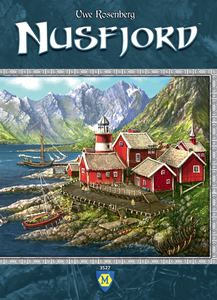
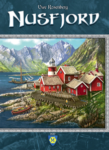
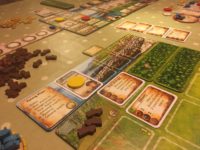
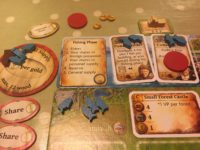




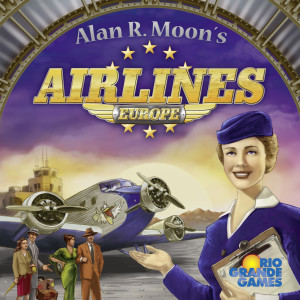
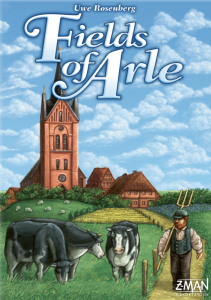
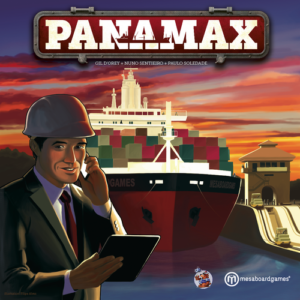
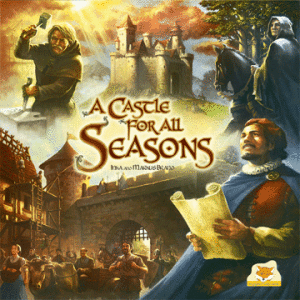
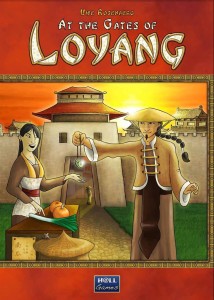
Sam says
This designer's games are almost without fail well-constructed and - usually - uncombative; giving players the challenge of setting out on an equal footing and exploring the different paths the game offers without interfering with each other. Nusfjord does that too to a large degree, although the shares give it a little hint of spice, as in a game of relatively low scoring (compared to some) the odd point can make all the difference. I didn't fall in love with the game but I did enjoy it, and it has the advantage on some Rosenberg (the epic Caverna, the epic-er Feast for Odin) games of a comparatively brief playtime, if you prefer that. We've put 60-90minutes here but with 2 or 3 players it may well dip under an hour (and with five to be fair, it may creep towards two).